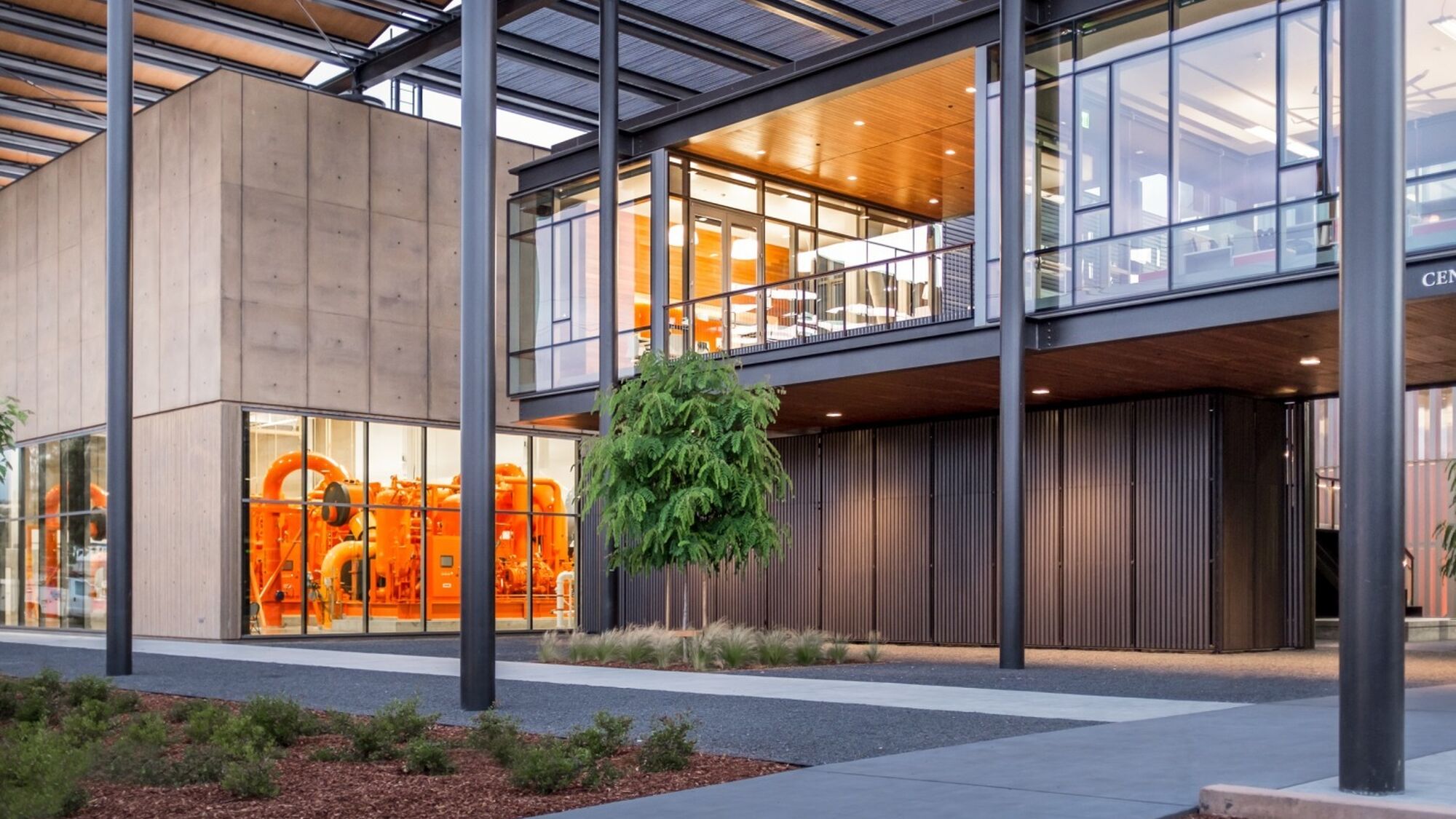
Stanford University
Stanford Central Energy Facility Building
The Central Energy Facility building (CEF) at Stanford University is the most visible component of the Stanford Energy Systems Innovation (SESI) project. This award-winning initiative reduces the carbon footprint by 68%, operating with 70% greater energy efficiency than the system it replaced.
The zero-net energy CEF building, prominently expressing its engineered elements, is a testimony to the vision and values of a world-leading university committed to sustainable planning and living.

The building provides administrative offices, conference rooms, classrooms, and workstations that benefit from chilled sails, natural ventilation, abundant natural light, daylight and occupancy sensors, phase change materials, and thermal radiant slabs for heating and cooling, keeping staff comfortable and providing significant energy reduction. Indoor and outdoor spaces are physically and visually integrated, with outdoor circulation and courtyard spaces centered on massive thermal energy storage tanks.
The campus-facing main entrance is shaded by photovoltaic (PV) frames that extend across the front of the building, providing additional electricity used to power the facility. The east façade displays vividly painted heat recovery chillers, OSHPD chillers, and hot water generators to a community committed to sustainable planning and living.